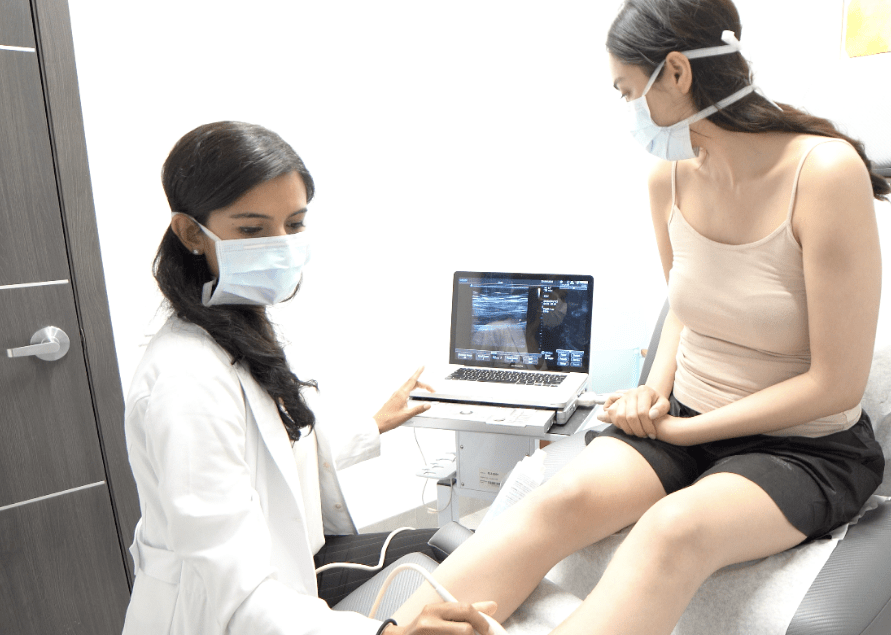How are spider veins treated?
If you have spider veins, you’re not alone. Many people have them. In fact, according to the American Society for Dermatologic Surgery, about 50 to 55 percent of women and 40 to 45 percent of men in the United States have some form of venous insufficiency, which is a condition that often leads to spider veins.
There are several treatment options available if you want to get rid of your spider veins. Some treatments are more effective than others. Here’s a look at five of the most popular spider vein treatments.
- Compression Stockings: Wearing compression stockings is one of the most common treatments for spider veins. Compression stockings apply pressure to your veins, which helps blood flow more efficiently. They also help reduce the pain and swelling associated with spider veins. While compression stockings can’t treat spider veins, they can prevent the symptoms from worsening.
- Sclerotherapy: Sclerotherapy is a spider vein treatment that involves injecting a solution into your veins. The sclerosing solution irritates the walls of your veins, causing them to collapse and get absorbed by the body. Sclerotherapy is a very effective spider vein treatment, but it only works on spider veins — not underlying chronic venous insufficiency.
- Endovenous Laser Ablation: Endovenous laser ablation is a minimally invasive spider vein treatment. A small laser fiber is inserted into your vein. The laser emits energy that heats up and damages the saphenous vein responsible for your vein problems, causing it to close. Endovenous laser ablation is effective for treating larger spider veins and underlying chronic venous insufficiency.
- Radiofrequency Ablation: Radiofrequency ablation is another minimally invasive vein treatment for underlying vein disease. A small probe is inserted into your vein. The probe emits radio waves that heat up and damage the saphenous vein, causing it to close. Radiofrequency ablation is effective for treating larger spider veins, varicose veins, and the root cause of all vein problems — chronic venous insufficiency.
- VenaSeal: Venaseal is a new, minimally invasive vein treatment. A small amount of a medical adhesive is injected into your diseased vein. The adhesive seals the vein shut. Venaseal is effective for treating varicose veins and chronic venous insufficiency. But since it’s a relatively new procedure, it’s not covered by all insurance plans.

My varicose vein hurts when I walk: what should I do?
Walking is considered one of the best exercises for your overall health, but it can be painful if you have varicose veins. The condition is caused by weak or damaged valves in your veins. This allows blood to flow backward and pool in your veins, causing them to enlarge. If you have varicose veins, you may notice that they hurt when you walk. This is because the extra blood in your veins puts pressure on the walls of your veins, which can cause pain, swelling, and cramping.
If you are experiencing pain in your legs from varicose veins, there are several things you can do to find relief.
- Wear Compression Stockings: They put gentle pressure on your legs and improve blood circulation. This can reduce the pain and swelling associated with varicose veins.
- Elevate Your Legs. When you are sitting or lying down, elevate your legs to reduce the pain. You can put pillows under your legs or sleep with your legs elevated on a pillow. You can also place your legs on a table while sitting down. When you elevate your legs, blood flows towards your heart and improves the symptoms of vein disease.
- Exercise: Exercise can improve blood circulation and strengthen the muscles in your legs. This can push some of the accumulated blood in your leg veins back to the heart and reduce the pain from varicose veins.
- Apply a Cold Compress: Applying a cold compress can reduce pain and inflammation. A cold compress won’t treat varicose veins, but it may provide temporary relief.
- See Your Vein Doctor: If your pain is severe or not improving with home treatment, you should see your vein doctor. Your vein doctor can offer minimally invasive spider vein and varicose vein treatments to address the root cause of spider veins.
Long Island Vein Treatment is a group of state-of-the-art medical centers led by board-certified vein doctors in Long Island. Our vein doctors carefully analyze the root cause of your spider veins and curate personalized treatment plans consisting of minimally invasive procedures. We have offices across Long Island, including West Islip, Jericho, and Hampton Bays. If you’re on the south shore of Long Island, you can find our medical center on the border of Suffolk County and Nassau County. Please schedule an appointment for your vein treatment in Long Island.
How to get rid of swollen varicose veins?
There are a few things you can do to get rid of swollen varicose veins. First, try to elevate your legs whenever possible. This will reduce the swelling. Second, try to avoid standing or sitting for long periods of time. Wear loose-fitting clothes and avoid anything that will constrict your legs. Try to exercise regularly — walking is a great exercise for varicose veins. And finally, visit your nearest medical center for vein treatment in Long Island. The only way to eliminate varicose veins is through minimally invasive procedures that destroy the diseased saphenous vein responsible for your vein problems, thus rerouting the accumulated blood into healthier veins.
